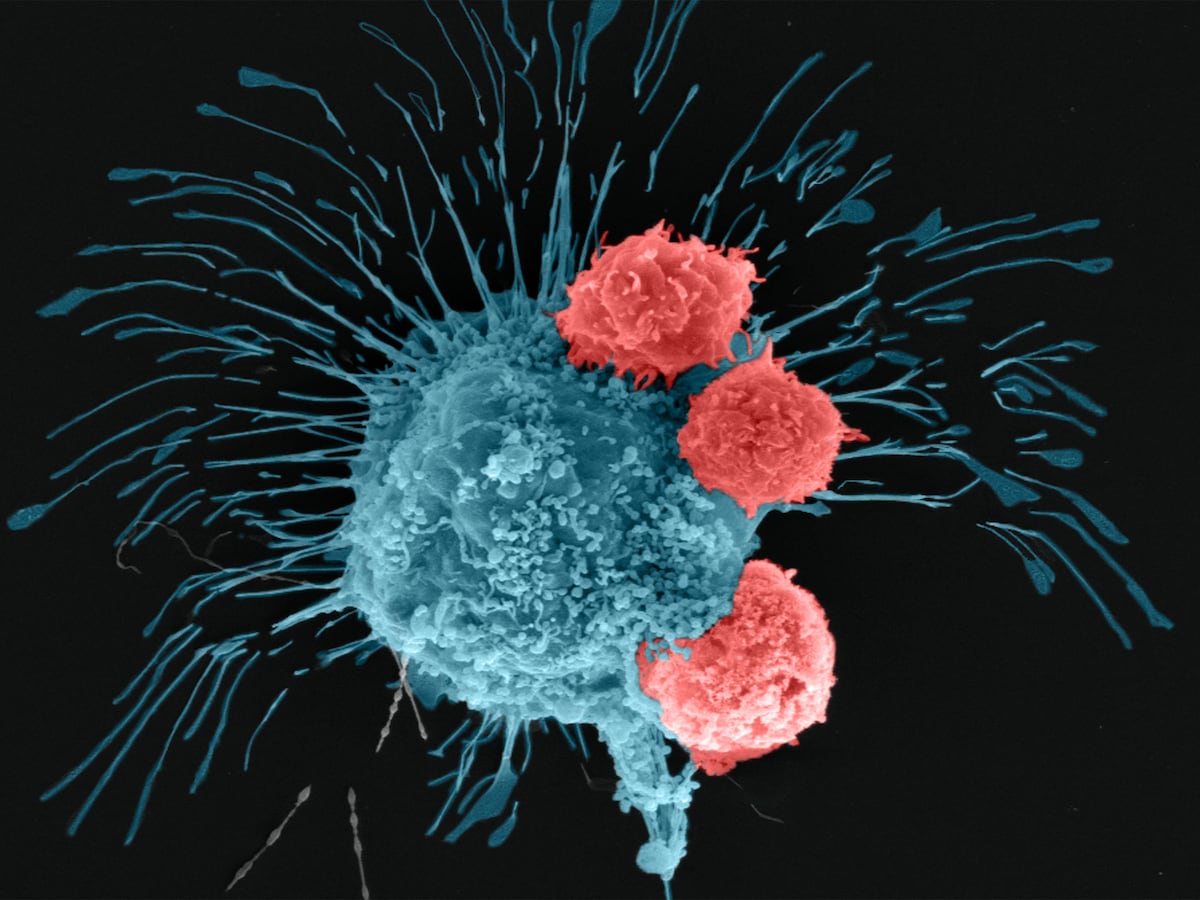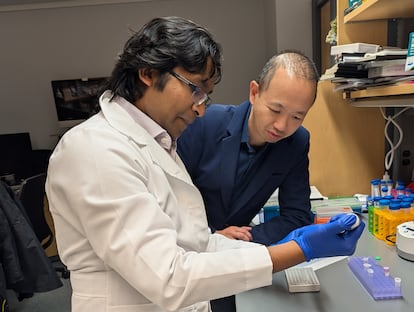Largest Cancer Atlas Reveals New Treatments for Incurable Tumors | Health and Wellness

One in two people alive will develop cancer during their lifetime. In neither case will doctors be able to know why what may have been a healthy cell 15 or more years ago turned precancerous; nor when the same cell became malignant and eventually caused a tumor. This almost science-fiction level of detail could become a reality thanks to new 3D cancer atlases that describe, cell by cell, the inside of tumors, the tissue that surrounds them and the immune system that tries to destroy them. This is a new dimension for understanding how this complex disease works and finding new ways to treat it.
Published this Wednesday are 3D atlases of some of the deadliest cancers: pancreatic, metastatic breast, colon, kidney, uterine and bile duct. This is a scientific feat that took years of work and analysis of samples from more than 2,000 patients. The results are part of the Human Tumor Atlas, an international project led by the United States that wants to map all known tumor types, and are part of the Cancer Moonshot megaproject, a new space race to halve cancer deaths.
New atlases offer the first 3D visualization of cancer. They also provide the most detailed description to date of not only what each cancer cell is, where it is and what it does, but also how they communicate with each other, and how they are connected to the so-called tumor microenvironment: the environment . tissue that often acts as a wall for the immune system and cancer treatment. This is the current frontier of research in this area. The results are presented in a collection of 12 studies in Nature and other magazines of the same publishing group.
“These studies open a new era in cancer research and have the potential to change our understanding of the disease and its future treatments,” explains geneticist Li Ding, professor of medicine at Washington University in St. Louis (USA) and his colleagues. -author of one of the main works. For the first time, cancer evolution can be studied in time and space at different levels of detail, from the activity of genes and other molecules inside cells to how they are organized at the macroscopic level within organs. With this new batch of data published today, the largest to date, there are now 14 atlases covering 21 different tumor types.
All humans come from a single cell, which multiplies until it creates a complete organism consisting of approximately 30 billion cells. Until recently, it was believed that a tumor, regardless of its size, arises from a single malignant cell. Another paper published today shows that this is not always the case. Within a tumor there may be several different cancer-causing cells, each with its own genetic profile and aggressiveness. This may explain why treatment can eliminate part of the tumor, but not completely eradicate the cancer. Research has analyzed how different parts of a tumor respond to treatment and what happens when it manages to invade other organs and cause metastases, responsible for 90% of all cancer deaths.
“The behavior of a tumor depends not only on its genetics,” Ken Lau, a biologist at Vanderbilt University and co-author of another of the papers published today, explains to this newspaper. “The same thing happens with people: we are not only our genetics, but also our experiences and who we are connected to; our environment. This is what we see now thanks to these atlases,” he clarifies.
It is hoped that these new assays will help understand why early-stage cancers spread uncontrollably and end a patient’s life in as little as one year, while later-stage cancers are eventually cured. Before the advent of cell-to-cell analysis technology in 2013, cancer was studied in its raw form: by crushing cells and analyzing the DNA, RNA and proteins present in this soup, which could contain not only malignant cells, but also others from surrounding tissues. and immunity. This did not allow us to obtain a spatial and three-dimensional understanding of what a living tumor looks like inside an organ.

Lau’s work focuses on precancerous lesions: groups of cells that interact with each other and can eventually lead to tumor formation. One logical application of these new techniques is to understand why some digestive tract tumors, including colon tumors, are being diagnosed in increasingly younger people in developed countries. “There are epidemiological studies that point to antibiotic use and diet, but we don’t know how these factors are integrated at the cellular level. The ability to study changes between a healthy cell and a precancerous cell could help us understand what is happening and even develop prevention strategies in the general population,” he details.
Another of the works is devoted to metastatic breast cancer, an incurable stage of the disease that is less studied due to the difficulty of obtaining and processing patient samples, Aviv Regev, vice president of the pharmaceutical company Genentech and a pioneer of cell atlas technology of the human body, explains to the newspaper. “Each of these atlases allows us to drill down into the tumor type and link patient evolution to changes in the cancer cell ecosystem and its microenvironment,” the bioinformatics team details. For Regev, the published data is “fantastic” material for artificial intelligence. “For example,” he elaborates, “we can train algorithms to create personal profiles of patients and visualize their tumor in three dimensions based on a biopsy.”
New atlases confirm that cancer is much more complex than previously thought. It’s not just that each person’s tumor is unique, but there are also different cellular structures within it that determine how it responds to treatment.
“The level of detail in these studies is unprecedented, it seems like a miracle,” admits Fernando Pelaez, director of biotechnology at the National Center for Cancer Research. One of the key contributions of these studies, the scientist explains, is knowledge of the tumor microenvironment. Until now, it was suspected that the tissue surrounding tumors was “not inert”; sometimes it helps kill cancer through antitumor signals, and sometimes it works the other way around, promoting tumor growth and deactivating immune system cells. “The beauty of these atlases,” argues Pelaez, “is the level of detail they provide on the subject and the large number of specimens covered.” The molecular biologist believes it is “very likely” that these assays will be used in medical settings in the future, much as routine analyzes of genes or entire genomes of patients are currently performed.
Edouard Battle, head of the colon cancer laboratory at the Barcelona Institute of Biomedical Research, emphasizes: “This new level of information tells us which cells are resistant to treatment and which cells form metastases in other organs.” “Thanks to these atlases, we can identify new nodes of communication between cells that can be cut with drugs. Another future application will be to identify patients who are most at risk of transforming precancerous lesions into tumors and develop preventative treatments.” The biochemist believes this is “the next frontier in cancer research.”
